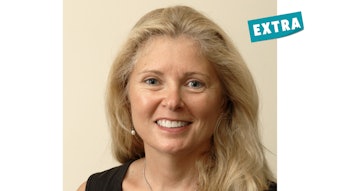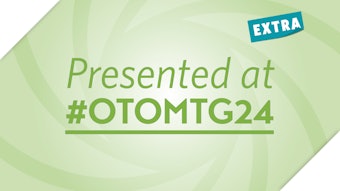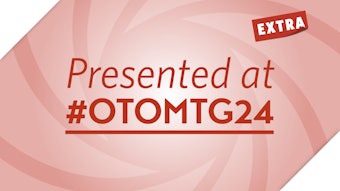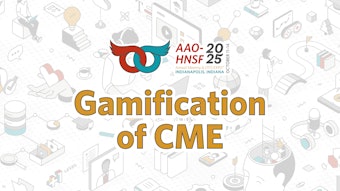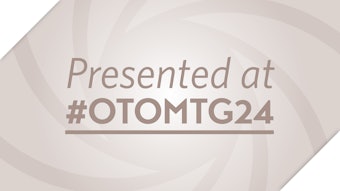An Update on Cochlear Implants for SSD and AHL
Cochlear implants have emerged as an excellent treatment option for patients with single-sided deafness and asymmetric sensorineural hearing loss, with the first manufacturer receiving FDA approval in 2019.
Steven D. Curry, MD, Evan Cumpston, MD, Nathan D. Cass, MD, and Dennis Bojrab II, MD, on behalf of the Implantable Hearing Devices Committee
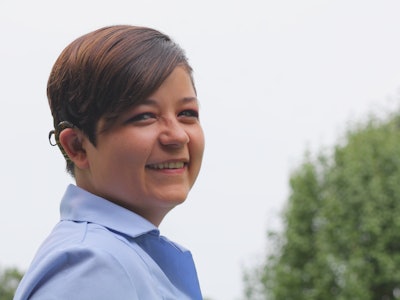
Traditionally, these conditions were managed with amplification using contralateral routing of signals (CROS) or bilateral contralateral routing of signals (BiCROS) hearing aids, or surgically with bone conduction implants (BCI). These devices enable the user to overcome the head-shadow effect by receiving sounds to the better ear that are delivered to the poor ear. However, neither CROS nor BCI technology restore auditory function to the deaf ear. Approximately 1%–5% of the population experiences SSD or AHL, which can lead to significant functional challenges, including difficulty with sound localization, reduced speech recognition in noisy environments, bothersome tinnitus, and a negative impact on quality of life.
Cochlear implants have emerged as an excellent treatment option for patients with SSD and AHL, with the first manufacturer receiving approval from the Food and Drug Administration (FDA) in 2019 for these expanded indications, and others following thereafter. A growing body of evidence has examined the outcomes in patients from young children (implanted at age 5 years or younger)1, 2 to older adults (≥65 years of age at surgery).3 Data from randomized controlled trials is now available, showing a number of benefits with cochlear implants in these patients.
Cochlear implantation has been shown to significantly improve speech perception in noise and sound localization in patients with SSD and AHL. Peters et al. found that cochlear implantation for SSD improved speech perception in noise, sound localization, tinnitus burden, and quality of life after three- and six-months' follow-up.4 A subsequent randomized controlled trial comparing cochlear implantation to BCI, CROS hearing aids, and no treatment to evaluate sound localization performance found that cochlear implants showed the best long-term improvement in sound localization and subjective spatial hearing. CROS/BiCROS and BCI had minimal to no significant improvement in these metrics.5 Improvements in the summation and squelch effects with cochlear implants for SSD and AHL, however, may be limited.6
Tinnitus suppression is another important benefit of cochlear implantation for patients with SSD/AHL. In retrospective cohorts and meta-analyses, between 75%–90% of patients experienced improvement in tinnitus following cochlear implantation among this cohort.7-10 Quality of life improvement, especially among patients with disabling tinnitus, is notable in patients receiving cochlear implantation for SSD and AHL patients. A national multicenter study in France found that cochlear implantation leads to significant improvements in quality of life in SSD and AHL patients, especially in patients with associated severe tinnitus, when CROS and BCI were not effective.11 The authors did not find a significant improvement in sound localization or speech recognition in noise among their study patients, but they noted that the relatively short follow-up time and duration of deafness >10 years in more than one-third of the subjects randomized to the cochlear implant arm limited the outcomes of their trial. A systematic review found that cochlear implants completely suppressed or improved tinnitus in most patients.12
Studies on the cost-utility of cochlear implantation in SSD and AHL have shown that cochlear implantation is a cost-effective treatment option. A study from the Netherlands on the economic value of cochlear implantation for SSD found that cochlear implants were cost-effective compared to BCI and no treatment.13 A prospective multicenter study, including a randomized controlled trial of 155 subjects with SSD or AHL found an even greater cost utility among patients with severe tinnitus.14
Setting realistic patient expectations and addressing potential barriers to successful outcomes is crucial in determining whether a patient with SSD or AHL would be a good candidate for cochlear implantation. SSD patients may rely more heavily on their better-hearing ear, leading to diminished rehabilitation.10 Compared with traditional cochlear implant candidates (with bilateral SNHL), implanted SSD and AHL patients may be more likely to stop using their implants; this has been of particular concern in children. Seven out of 38 patients (18.4%) in a study on cochlear implant usage in SSD were non-users at 24 months, with improved hearing in noise at 12 months correlating with better usage.15 Garcia-Matte et al. found declining usage trends over time among implanted pediatric SSD patients in Australia, averaging 4.6 hours of CI use per day with a mean follow-up of 4.3 years.16 A study of US pediatric patients who underwent cochlear implantation for SSD found that only 10 of 54 patients (19%) used their implants for at least 6 hours per day at last follow-up, while 13 (24%) were limited users (>2 but <6 hours per day), despite audiometric benefit.17
In summary, from an audiometric perspective, patients diagnosed with SSD and AHL experience deficits, including inability to distinguish speech directed to the affected side, localizing sounds, and hearing in background noise, which interferes with communication and social functioning. Cochlear implants offer a transformative option for the treatment of SSD and AHL, providing significant auditory performance benefits, tinnitus suppression, and quality of life improvement that surpass those provided by CROS/BiCROS or BCI.
Challenges in auditory rehabilitation after cochlear implantation should be discussed with patients prior to pursuing surgery. As with patients who are bilateral candidates for cochlear implantation, word recognition scores are variable and require significant time to achieve optimal hearing outcomes. Patients who do not receive the expected benefits may become non-users or limited users, especially in the context of aidable contralateral hearing.
Future investigations should examine factors that lead to non-use and adherence to post-implantation rehabilitation, especially among pediatric patients. Targeted education and family support resources may improve this. While the current data are promising, the measurement of long-term outcomes according to patients’ age and etiology of hearing loss remain to be seen.
References
- Spitzer ER, Attlassy Y, Roland JT, Jr., Waltzman SB. Early cochlear implantation for children with single sided deafness. Int J Pediatr Otorhinolaryngol. 2024;177:111857.
- Patro A, Holder JT, Brown CL, DeFreese A, Virgin F, Perkins EL. Cochlear Implantation in Very Young Children With Single-Sided Deafness. Otolaryngol Head Neck Surg. 2023;169(6):1615-23.
- Johnson BR, Dillon MT, Thompson NJ, Richter ME, Overton AB, Rooth MA, et al. Benefits of Cochlear Implantation for Older Adults With Asymmetric Hearing Loss. Laryngoscope. 2025;135(1):352-60.
- Peters JPM, van Heteren JAA, Wendrich AW, van Zanten GA, Grolman W, Stokroos RJ, et al. Short-term outcomes of cochlear implantation for single-sided deafness compared to bone conduction devices and contralateral routing of sound hearing aids-Results of a Randomised controlled trial (CINGLE-trial. PLoS One. 2021;16(10):e0257447.
- van Heteren JAA, van Oorschot HD, Wendrich AW, Peters JPM, Rhebergen KS, Grolman W, et al. Sound Localization in Single-Sided Deafness; Outcomes of a Randomized Controlled Trial on the Comparison Between Cochlear Implantation, Bone Conduction Devices, and Contralateral Routing of Signals Hearing Aids. Trends Hear. 2024;28:23312165241287092.
- Wesarg T, Aschendorff A, Baumgaertel R, Bottcher J, De Coninck L, Dhooge I, et al. Cochlear Implantation in Single-Sided Deafness and Asymmetric Hearing Loss: 12 Months Follow-up Results of a European Multicenter Evaluation. J Int Adv Otol. 2024;20(4):289-300.
- Holder JT, O'Connell B, Hedley-Williams A, Wanna G. Cochlear implantation for single-sided deafness and tinnitus suppression. Am J Otolaryngol. 2017;38(2):226-9.
- Levy DA, Lee JA, Nguyen SA, McRackan TR, Meyer TA, Lambert PR. Cochlear Implantation for Treatment of Tinnitus in Single-sided Deafness: A Systematic Review and Meta-analysis. Otol Neurotol. 2020;41(8):e1004-e12.
- Wendrich AW, Assouly KKS, van Heteren JAA, Peters JPM, Grolman W, Stokroos RJ, et al. Tinnitus reduction in patients with single-sided deafness: the effect of cochlear implantation, bone conduction devices, and contralateral routing of sound hearing aids investigated in a randomized controlled trial. Front Neurol. 2024;15:1428106.
- Lindquist NR, Holder JT, Patro A, Cass ND, Tawfik KO, O'Malley MR, et al. Cochlear Implants for Single-Sided Deafness: Quality of Life, Daily Usage, and Duration of Deafness. Laryngoscope. 2023;133(9):2362-70.
- Marx M, Mosnier I, Venail F, Mondain M, Uziel A, Bakhos D, et al. Cochlear Implantation and Other Treatments in Single-Sided Deafness and Asymmetric Hearing Loss: Results of a National Multicenter Study Including a Randomized Controlled Trial. Audiol Neurootol. 2021;26(6):414-24.
- Peter N, Liyanage N, Pfiffner F, Huber A, Kleinjung T. The Influence of Cochlear Implantation on Tinnitus in Patients with Single-Sided Deafness: A Systematic Review. Otolaryngol Head Neck Surg. 2019;161(4):576-88.
- van Lieshout C, Abraham K, Smit AL, Frederix GWJ. A cost-utility analysis of cochlear implants for single sided deafness in adults and children in the Netherlands. PLoS One. 2024;19(8):e0307881.
- Marx M, Mounie M, Mosnier I, Venail F, Mondain M, Uziel A, et al. Cost-utility of cochlear implantation in single-sided deafness and asymmetric hearing loss: results of a randomized controlled trial. Eur J Health Econ. 2024.
- Tan VYJ, Hollow R, Tari S, Rousset A, Wills R, Briggs RJS, et al. Cochlear implant usage in single sided deafness and factors affecting usage. Cochlear Garcia-Matte RJ, O'Neil LM, Chase C, Leeming P, Clack R, Rodrigues S, et al. Long-Term Cochlear Implant Sound Processor Usage in Children with Single-Sided Deafness. Otol Neurotol. 2024;45(4):392-7.
- Macielak RJ, Richard C, Malhotra PS, Adunka OF, Findlen UM. Cochlear Implantation for Single-Sided Deafness in Pediatric Patients: A Critical Assessment of Usage Rate. Otol Neurotol. 2024;45(10):1122-7.
